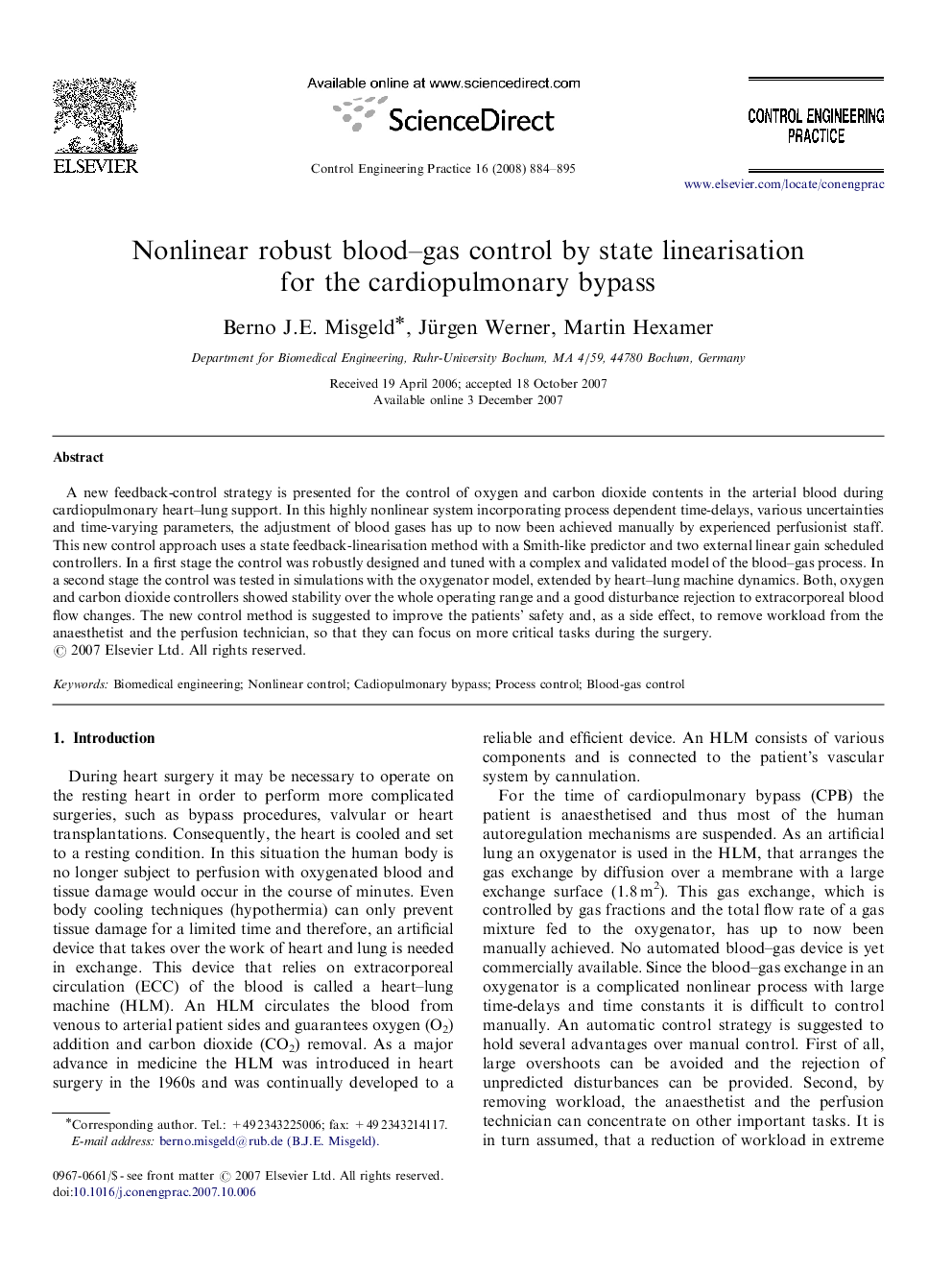| Article ID | Journal | Published Year | Pages | File Type |
|---|---|---|---|---|
| 700221 | Control Engineering Practice | 2008 | 12 Pages |
A new feedback-control strategy is presented for the control of oxygen and carbon dioxide contents in the arterial blood during cardiopulmonary heart–lung support. In this highly nonlinear system incorporating process dependent time-delays, various uncertainties and time-varying parameters, the adjustment of blood gases has up to now been achieved manually by experienced perfusionist staff. This new control approach uses a state feedback-linearisation method with a Smith-like predictor and two external linear gain scheduled controllers. In a first stage the control was robustly designed and tuned with a complex and validated model of the blood–gas process. In a second stage the control was tested in simulations with the oxygenator model, extended by heart–lung machine dynamics. Both, oxygen and carbon dioxide controllers showed stability over the whole operating range and a good disturbance rejection to extracorporeal blood flow changes. The new control method is suggested to improve the patients’ safety and, as a side effect, to remove workload from the anaesthetist and the perfusion technician, so that they can focus on more critical tasks during the surgery.
